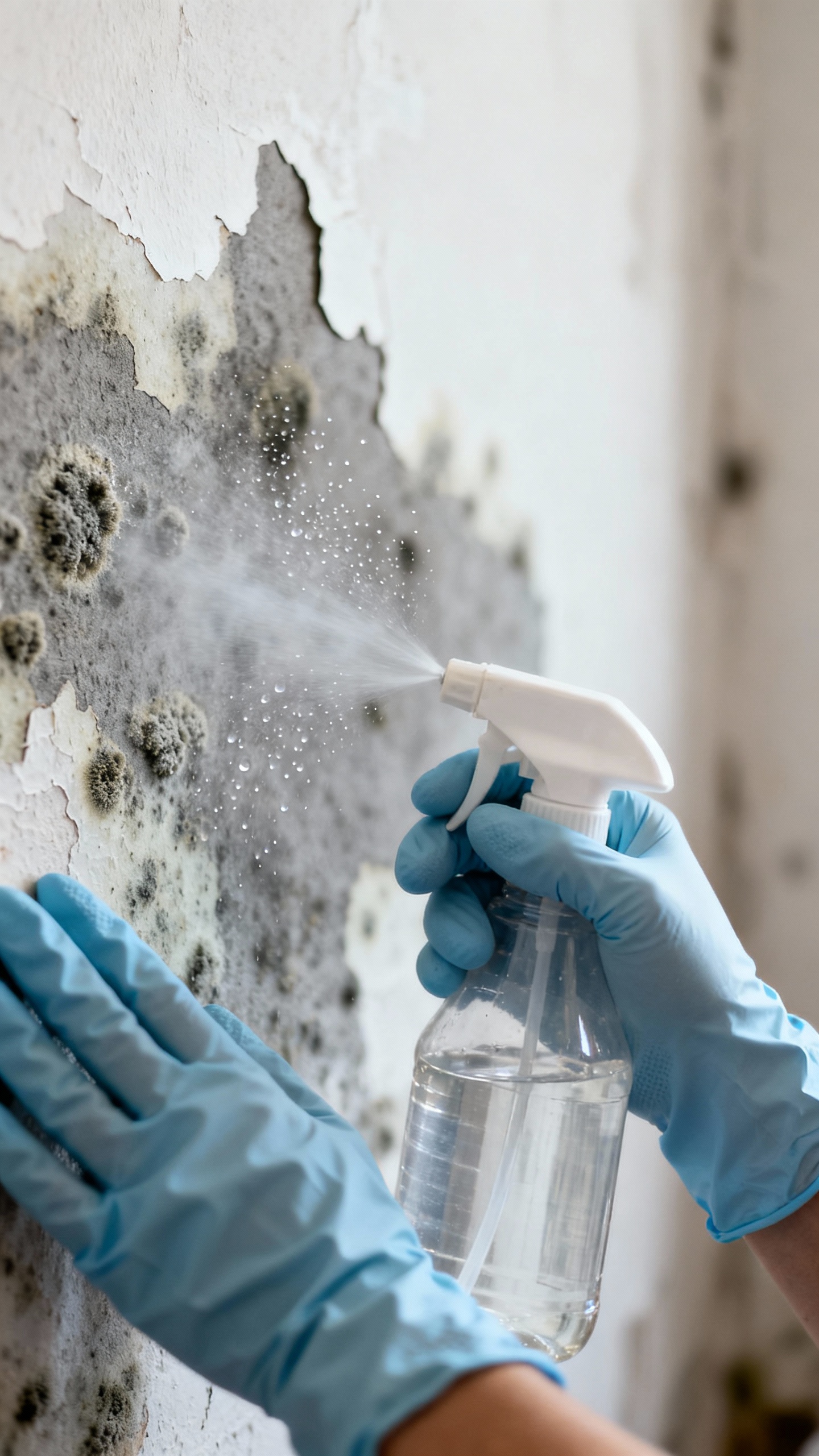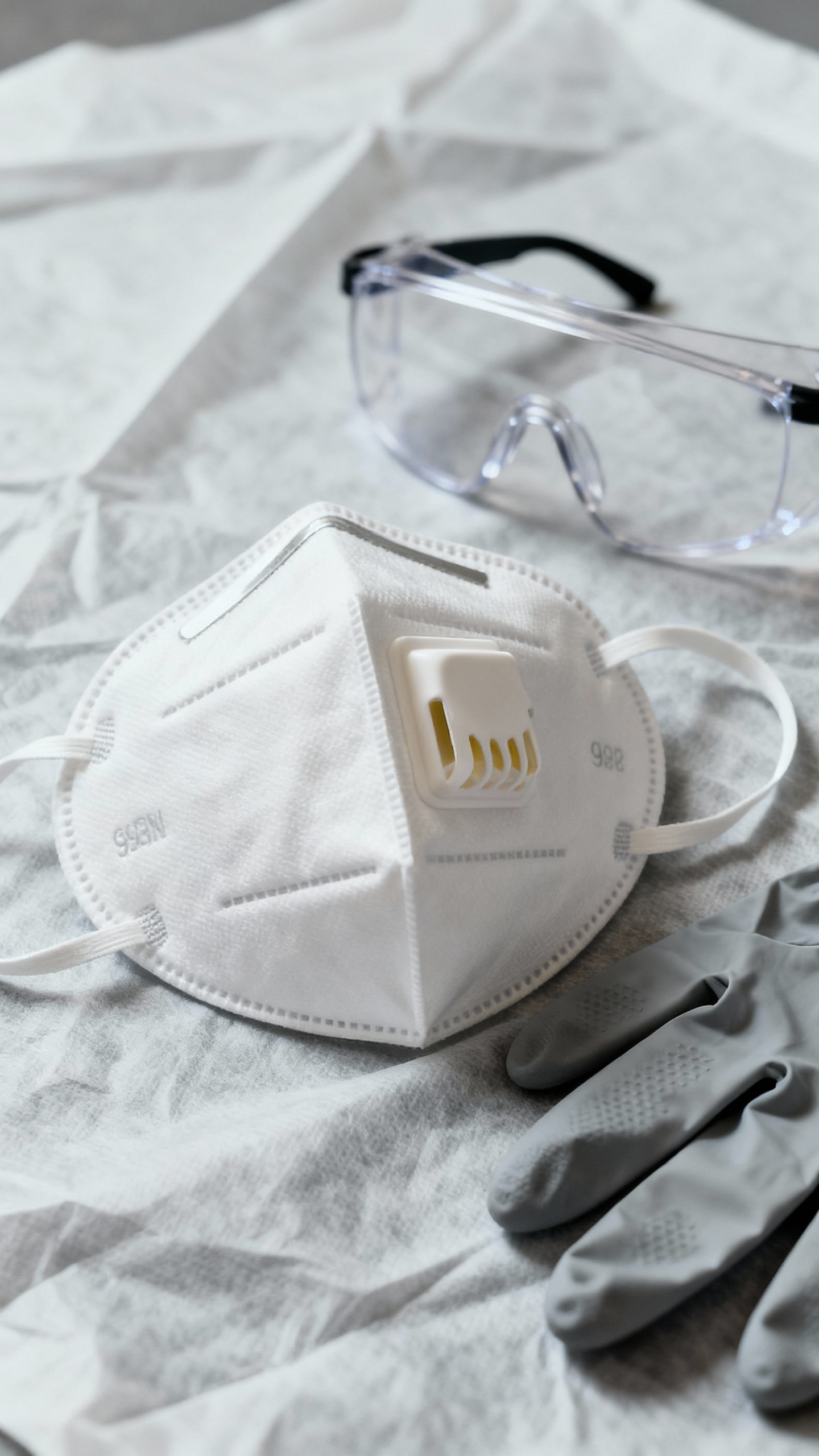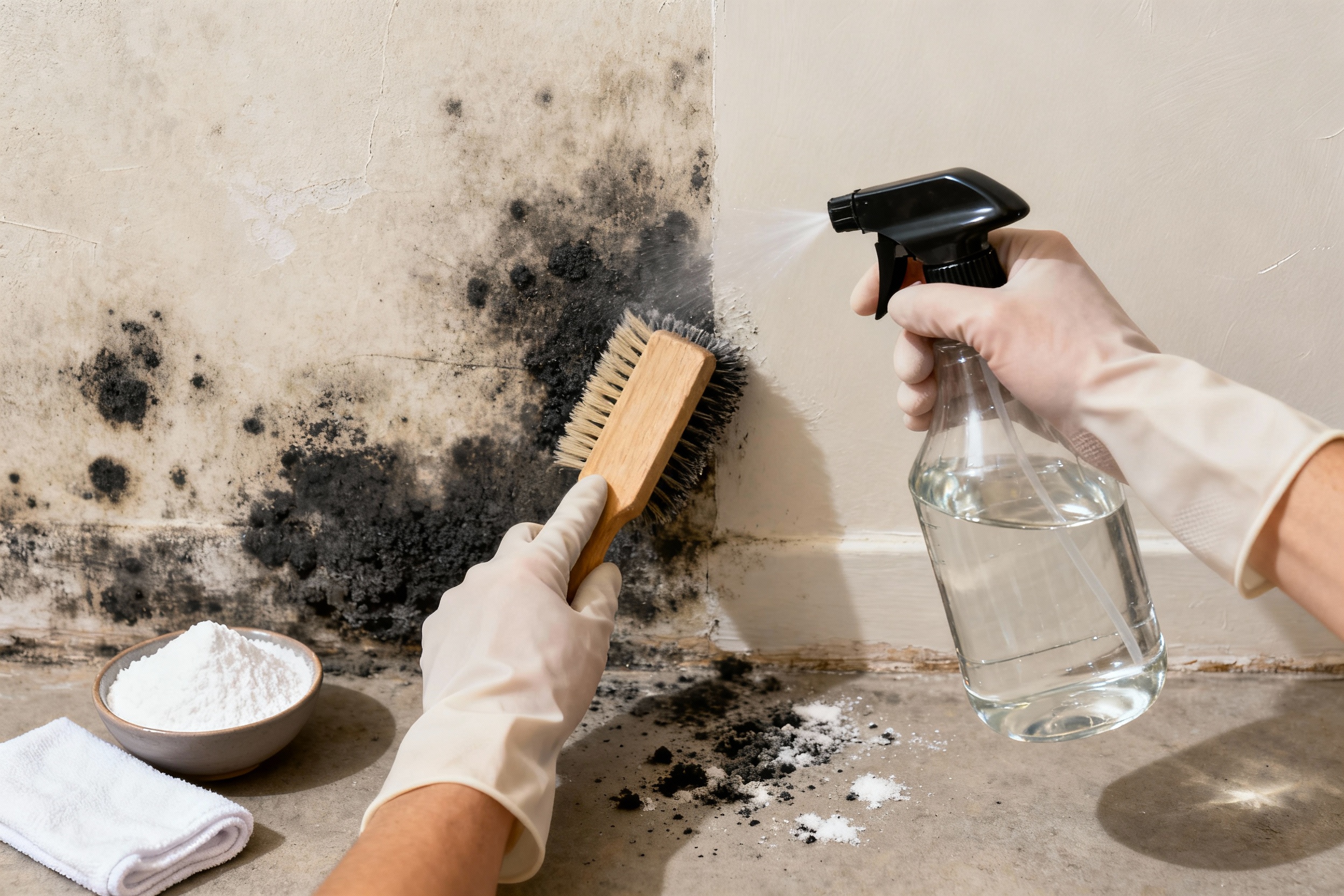Mold on your walls is like that one guest who shows up uninvited, stays too long, and leaves a weird smell. You don’t need a hazmat suit or a weekend-long renovation to deal with it. With a few smart steps, you can remove mold fast and keep it from coming back.
Let’s get in, get it gone, and stop it for good.
How to Tell It’s Mold (and Not Just Dirt)

Mold looks fuzzy or slimy, usually in speckled patches. You’ll see it in corners, along baseboards, behind furniture, or wherever moisture hangs out. It can be black, green, gray, or even orange.
Dirt wipes off easily; mold loves to smear and return. Quick check: If you smell a musty, damp odor and see discoloration that keeps spreading, you’ve got mold. And yes, you should deal with it ASAP.
Safety First: Gear Up and Prep the Area
You don’t need to go full astronaut, but protect yourself and your space. Mold spores spread when you clean, so think containment.
- Wear: N95 mask or respirator, rubber gloves, and safety glasses.
- Ventilate: Open windows.
Use a fan blowing air out if possible.
- Protect: Lay down drop cloths or trash bags to catch drips and debris.
- Control dust: Lightly mist the area with water before scrubbing to keep spores from flying.
FYI: If the mold covers more than about 10 square feet (a 3×3 section), or you suspect it comes from sewage leaks or contaminated water, call a professional. Not the time to DIY, IMO.

The Easiest Cleaning Method (That Actually Works)
No need for fancy potions. You need a cleaner that kills mold and a method that doesn’t wreck your paint or lungs.
- Pick your cleaner:
- Distilled white vinegar: Cheap, effective, and safe for most painted walls.
Use it undiluted.
- Hydrogen peroxide (3%): Great for porous surfaces. Spray and let it fizz. Avoid mixing with anything else.
- EPA-registered mold cleaner: Works fast.
Follow the label like it’s gospel.
- Bleach (last resort): Only for non-porous surfaces like tile or sealed concrete. Never mix with ammonia or vinegar.
- Distilled white vinegar: Cheap, effective, and safe for most painted walls.
- Apply generously: Spray the area until damp but not dripping. Let it sit 10–15 minutes to penetrate.
- Scrub gently: Use a soft brush or sponge.
Don’t sand or scrape hard on drywall—you’ll damage the paper and feed the mold.
- Wipe clean: Use a clean, damp cloth to lift residue. Then wipe again with dry cloths.
- Repeat if needed: If stains linger, reapply cleaner and wait longer before scrubbing.
Pro tip: If you see mold coming back within days, the moisture problem remains. You’re swabbing the symptom, not the cause.
What About Stains That Won’t Budge?
Mold can leave shadows on porous paint or drywall.
If the area feels soft or crumbly, you need to cut it out and replace the section. If it’s solid but stained, seal it.
- Use a stain-blocking primer: Shellac- or oil-based primers lock in discoloration.
- Repaint with a washable, mildew-resistant paint: You’ll thank yourself later.
Find the Cause: Mold’s Favorite Hangouts
You can’t win if you don’t fix the moisture. Mold thrives where water lingers.
- Bathrooms: Steamy showers with poor ventilation.
Fan broken or too weak? That’s your culprit.
- Kitchens: Cooking steam, leaky sink pipes, or bad backsplash caulking.
- Bedrooms & closets: Exterior walls + poor insulation + blocked airflow behind furniture.
- Basements: High humidity, foundation cracks, or unsealed walls.
- Windows: Condensation dripping down and soaking sills and drywall.
Easy Diagnostics
– Humidity check: Get a hygrometer. Aim for 30–50% indoor humidity. – Thermal check: Feel for cold patches on exterior walls—could be poor insulation. – Leak hunt: Look for water stains, peeling paint, swollen trim, or warped flooring.
Prevent It for Good: The Moisture Master Plan
Here’s where we turn “clean once” into “never deal with this again.” Okay, almost never.
- Vent fans actually matter: Run bathroom and kitchen fans during use and 20 minutes after.
Size them properly (1 CFM per square foot is a decent rule).
- Dehumidifiers: Basements and laundry rooms love these. Set to 45–50%.
- Fix leaks fast: Drips, sweating pipes, bad caulk. Small leaks create big mold.
- Improve airflow: Pull furniture 2–3 inches from exterior walls.
Open closet doors regularly.
- Insulate: Wrap cold water pipes. Upgrade attic and exterior wall insulation where practical.
- Control condensation: Use storm windows or double-pane inserts. Close blinds at night but leave a small gap at the bottom for airflow.
- Clean smarter: Wipe shower walls weekly with vinegar.
Launder damp towels right away. Don’t let wet laundry sit—ever.
Special Cases: Drywall, Painted Walls, and Bathrooms
Different surfaces need slightly different approaches. You don’t treat glossy paint and bare drywall the same, IMO.
Painted drywall
– Use vinegar or hydrogen peroxide, not bleach. – Scrub gently.
Don’t soak the wall. – If bubbles appear or paper feels mushy, cut out affected drywall and patch.
Bathroom tile and grout
– Bleach or hydrogen peroxide works well here. – Use a grout brush and rinse thoroughly. – Reseal grout annually to keep moisture out.
Unfinished drywall or raw plaster
– Avoid soaking. You’ll worsen the problem. – Lightly treat with peroxide, let dry fully, then prime with a stain-blocking primer. – If fibers look degraded, replace the section.
When You Should Call a Pro
Sometimes DIY turns into “why did I try.” No shame.
- Large area: Bigger than 10 square feet.
- HVAC involvement: Growth inside ducts or around vents.
- Strong health reactions: You feel sick or wheezy when near the area.
- Contaminated water: Flooding from sewage or unknown sources.
FAQs
Does bleach kill mold on walls?
Bleach kills surface mold on non-porous materials like tile or sealed concrete. It struggles on porous surfaces like drywall and wood because it doesn’t penetrate well.
If you use it, ventilate heavily and never mix it with other cleaners.
Is vinegar enough to get rid of mold?
Yes, for small to moderate growth on painted walls and many household surfaces. Use undiluted white vinegar, let it sit 10–15 minutes, scrub, and wipe dry. It may leave a light smell that fades within a few hours.
How do I know if the mold is dangerous?
All mold can irritate some people, especially those with allergies or asthma.
Black mold (Stachybotrys) gets lots of press, but any active growth signals excess moisture. Focus on removal and moisture control rather than playing mold detective.
Can I just paint over the mold?
Short answer: please don’t. Paint traps moisture and the mold will punch through like a sequel nobody asked for.
Clean it, dry it, prime with a stain-blocker, then paint.
Will a dehumidifier fix mold by itself?
It helps a ton, but it won’t fix leaks or bad ventilation. Combine it with proper fans, insulation, and prompt repairs. Think of it as part of the squad, not the lone hero.
How long does it take to remove mold from a wall?
For small patches, you can treat and clean it in under an hour.
Add drying, priming, and repainting, and you’re looking at a day or two total. Bigger or deeper issues will take longer—sometimes replacement beats endless scrubbing.
Wrap-Up: Kick Mold Out and Lock the Door
You don’t need to fear mold—you just need a plan. Clean it with the right solution, treat stains properly, and fix the moisture source so it stays gone.
Keep humidity in check, move air, and stay on top of leaks. Do that, and mold becomes a minor blip, not a recurring nightmare. Easy, right?
Now go evict that musty freeloader.


